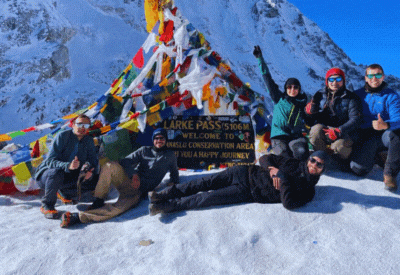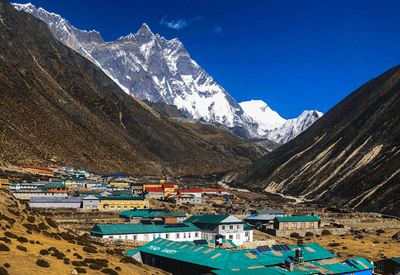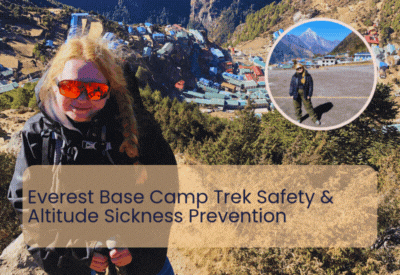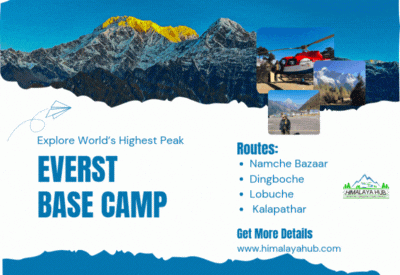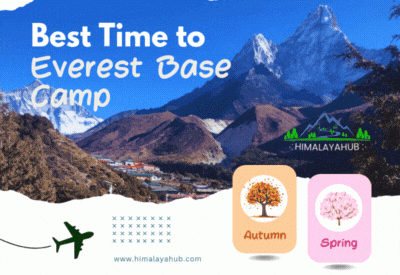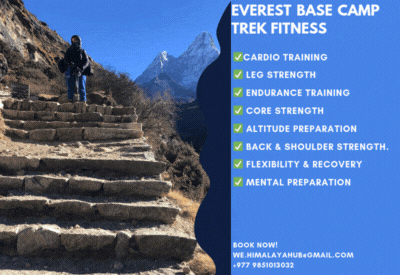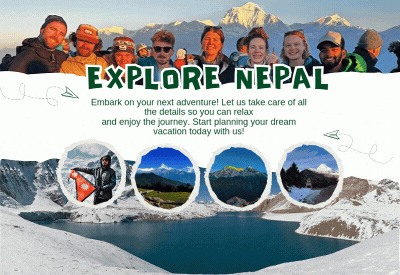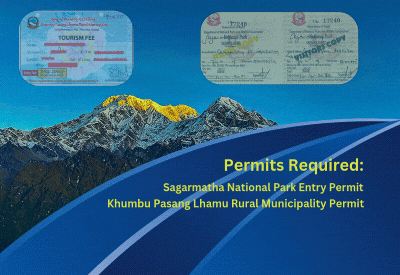Cost of Upper Dolpo Trek Permits
One of Nepal's restricted areas is the Dolpo Trek. Thus, you need to obtain a permit from a Nepalese municipal agency and use professional guides or porters. Three hiking permits are required. It is also included in the price of the higher Dolpo hike.
- permit for Shey Phoksundo National Park costs NPR 3000.
- Permit for Lower Dolpo Restricted Area $20 per person, each week. (necessary minimum for a two-week permit)USD 20 x 2 = USD 40 each
- Permit for the Upper Dolpo Restricted Area, US$500 per person, valid for 10 days
- Permits for the Upper Dolpo Trek cost US$ 570 per person overall.
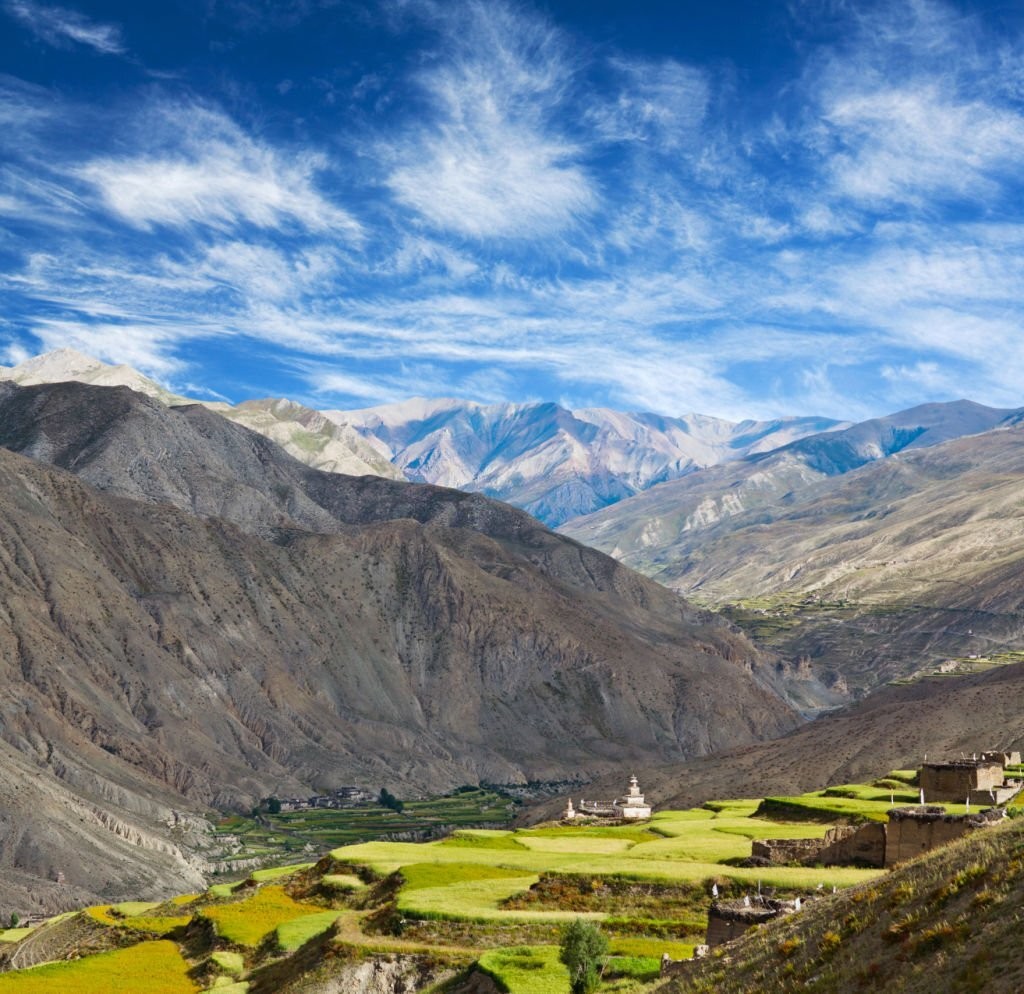
Cost of Porter and Guide
If you are seeking to trek on your own, there are plenty of trekking routes throughout Nepal. However, if you plan to trek to Upper Dolpo, make sure you have company because a group must consist of at least two hikers in order to get a trekking permit. If you are traveling solo, ask your travel agency to acquire a Ghost Permit with a real person’s credentials. However, you need to pay double the permit cost.
Unlike other trek routes, the guides don’t get any discount on food. The guides and the tourist are subject to the same price. As a result, the daily average cost of hiring a professional guide to Upper Dolpo is about USD 30 to 35 including lodging, food, and insurance for the guide which is costlier than other trekking routes in Nepal.
If you are wondering, you may also travel to Upper Dolpo with only a porter given that he is a local. However, the cost of hiring a porter is only marginally different from that of hiring a guide.
If you are looking for a bang for your buck, we suggest you hire a “porter guide” who has a lot of travel experience in the Upper Dolpo region. He works both as a porter and a guide for the cost of one which is about USD 32-35 per day.
However, we recommend that you travel with a licensed professional guide for the best experience. A professional license acquired through rigorous training ensures that you don’t face any unnecessary hassle during the trek.
Trekking guide and porter fees
- US$35 per day for an experienced professional guide.
- Seasoned Trekking Porter US$ 28–$30 per day
Cost of Transportation
The most affordable route to getting to the Dolpo Circuit is a 45-minute flight to Nepalgunj followed by another flight to Juphal the next day. If you are looking for a cheaper alternative, you may take a night bus to Jajarkot from Kathmandu which is a 22-hour drive followed by a jeep to Juphal or Dunai.
Things to Remember:
- There are no direct flights to Jhupal or Dunai from Kathmandu. Although chartered flights to Jhupal Airport are available it is not reliable because of the unpredictable weather conditions there.
- Traveling by road is not an enjoyable experience for many travelers. If you are traveling by road, get ready for a three-day journey(KTM to Jajarkot- 22 hours; Jajarkot to Juphal/ Dunai- 2 days) along a wet, winding, and bumpy road.
Transportation Fees for the Upper Dolpo Circuit
Kathmandu-Nepalgunj (one-way)
USD 207*2 = USD 414 per individual.
Nepalgunj-Juphal(one-way)
USD 165*2 = USD 230 for each individual.
Kathmandu- (Rimna) (Rimna)
USD 10* 2 = USD 20 each.
USD8*2 = USD 16 each.
USD10* 2 = USD 20 each.
Cost of Food in Upper Dolpo
The climate in Upper Dolpo is not suitable for large-scale agriculture. As a result, most of the food here has to be brought from other regions. It is also one of the remotest regions of Nepal. Owing to a lack of proper transportation infrastructure, getting food here is both challenging and expensive. Helicopters can only carry supplies from Nepalgunj to Jhupal. Mules and porters then transport the supplies to the region.
All this trouble adds up. A meal costs approximately USD 8-10. You will have to spare around USD 28-33 per day for food and drinks. However, it may increase depending on your appetite.
Cost of Accommodation in Upper Dolpo
Accommodation in the Dolpo Circuit has seen considerable improvement. There are tea houses along the route and a group of 6 people can easily be accommodated in any of the lodging facilities that are available up to Shey Phoksundo Lake.
Along the circuit, the cost of accommodation is around USD 6 to USD 9 for a twin bed. Camping is another option as well. However, one requires top-tier camping equipment. Challenges and Difficulty Rating.
As in other trekking routes in Nepal, altitude sickness is not uncommon. However, since trekkers get a chance to acclimatize along the way before they reach the higher altitude of the circuit, the success rate is very high. 95% of trekkers complete the circuit. However, with a daily commute of 6-8 hours at an altitude of 4000- 5115 meters, it still requires considerable effort.
Communications Facilities in the Dolpo Region
Mobile reception is extremely poor in the Upper Dolpo region. Very few locations have good reception. You may find satellite telephones in some villages for emergencies. The Internet can be accessed either via mobile network or wireless internet service available in some lodges along the route.
Ncell offers the widest network coverage which might come in handy. However, if you can, it's best to carry a satellite phone.
Other Costs
This may vary from person to person. It is better if you are prepared for some additional expenses.
- Owing to the remoteness of the region, it’s common practice to pay for charging the batteries of your electronic gadgets.
- You may also have to pay for the “bucket showers” you take during the trek.
- Other expenses may come in the form of donations and tips.
FAQs about the Upper Dolpo trekking route
When is the ideal time to go trekking?
The peak hiking season is from October through May. Trekking in Nepal is best during the first two months of the dry season, October and November when the weather is still agreeably warm. Although it may become quite cold at higher elevations, the months of December, January, and February are still suitable for trekking.
How challenging is the Dolpo trek?
Dolpo may be categorized as a challenging trek, more so due to duration than height. Depending on the path you take, it takes 20 to 28 days on average to complete the walk. Trekkers must endure several high, chilly passes including the Baga La (5,070 m), Sela (5,094 m), Nangdola (5,110 m), Numa La (5,190 m), and Jayanta in addition to passing through valleys and wooded places like the Phokshundo National Park (5221 m).
What lodging options are available during the trek?
The guiding company will make sure you have warm, cozy lodging along the entire trek. There aren't many tea houses or lodges in this region, making it difficult to locate a place to stay on your own. so camping is one of the alternatives and most of the time, it is only the solution left.
Does the hike need a permit?
Separate licenses are needed since the Dolpo area is divided into Upper Dolpo and Lower Dolpo. Trekkers who intend to visit Dolpo will need the TIMS (Trekkers Information Management) card, the Upper Dolpo Special permission (issued by Immigration of Nepal with the assurance of An approved Trekking agency), and the Lower Dolpo permit because the entire region is considered to be restricted. The Nepali Department of Immigration is responsible for issuing Dolpo permits.
Does the Dolpo Region have phone and internet service?
If you wish to remain in touch with friends and family, it is highly advised that you get a native Nepalese sim card like NCELL or NTC. However, because of its remote location, there is no assurance that you will always have reception. On the other hand, take a break from technology and bury yourself in the beauty of the mountains.
Is trip insurance necessary?
For hikes like the Dolpo treks, which are remote and at a high altitude, travel insurance is unquestionably necessary. You should make sure to have adequate cash backup for any unanticipated emergencies, such as accidents or natural calamities.


